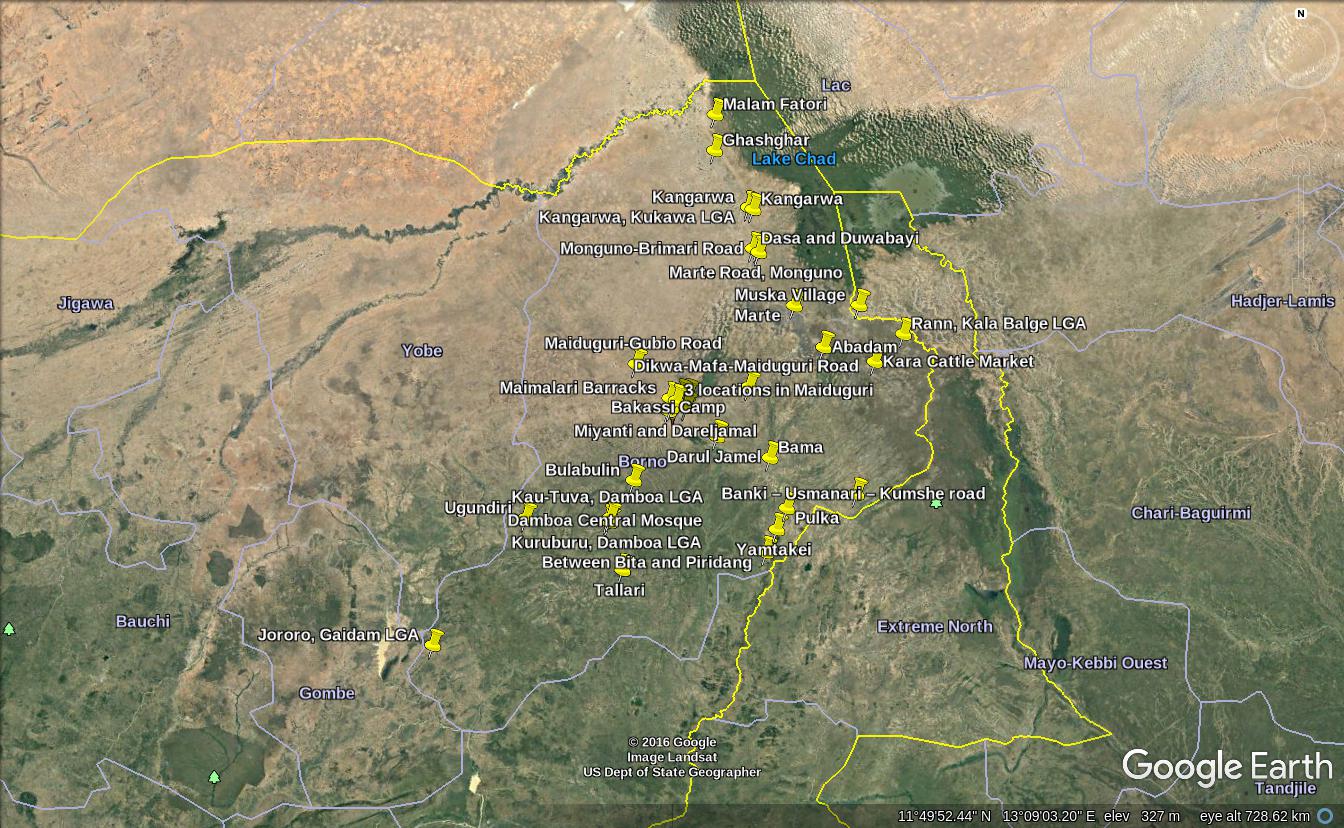The resurgence of Boko Haram
6th December 2016

The Boko Haram insurgency entered its seventh year at the beginning of 2016, and a number of important factors have had a substantial effect on developments on this front. In May 2015, Muhammadu Buhari was sworn in as President of Nigeria on an electoral platform that included taking a tougher stance on security issues. Before the elections, a troop surge belatedly approved by the Goodluck Jonathan administration led to marked improvements on the ground in Nigeria’s North East. Buhari pledged to increase troop numbers, facilitate the availability of arms and ammunition, improve troop welfare and engage in dialogue where necessary, as part of a holistic security strategy. Through the year, substantial gains were recorded as the sect was forced to transition from arrogantly perpetrating acts of mass terror – bombing civilian and military infrastructure, wholesale sacking of towns, territorial acquisition and in its most infamous case, the kidnapping of 273 girls from their school dormitory in Chibok, Borno State in April 2014 – to a more minimalist strategy of targeted attacks at the formations and stations of the Nigerian military as well as the joint task force assembled by Nigeria’s neighbours – Cameroon, Chad and Niger as well as raids on the villages, towns and cities that dot the vastness of Nigeria’s North East.
Utilising a fairly extensive network of contacts, resources and third party news sources, SBM Intelligence has tracked the nature, locations and severity of Boko Haram’s activities over the course of 2016 and what they reveal is a group which while considerably depleted in numbers, material and access to some of its traditional strongholds, still displays an intimate and remarkable understanding of the geography of its area of operation and is still able to inflict significant hardship on the militaries of the region and more tragically, its residents. Also, it shows a Boko Haram which while it has changed its tactics is still committed to the ultimate goal of taking Maiduguri.
The numbers tallied by SBM Intelligence from the second half of the year show a clear rise in successful Boko Haram operations with an attendant spike in military and civilian casualties on the Nigerian side. While June was the worst month in 2016 for Boko Haram with 318 fighters lost, October proved to be the costliest month for the Nigerian military. In one incident, the army declared one officer and 45 soldiers missing in a major Boko Haram attack on October 17. The incident, initially denied by the military when reported first by the newspaper Premium Times, was only officially confirmed when the military formally notified the families of the 46 personnel, drawn from nine army battalions and divisions on November 20 and requested that their next of kin forward bank details for onward remittance of accrued payments. The soldiers in question had been on deployment in Gashigar, which sits on the northernmost edge of Borno, as part of the ‘Operation Gama Aiki’ aimed at displacing insurgents hibernating around the Nigerian border with Niger and Chad when a daring nighttime raid by the group led to the single largest loss of military personnel this year. In its wake, the military opened a secret inquiry into the attack after some brigade commanders raised questions about the conduct of the soldiers. Also, the security forces stepped up the breadth and intensity of their counterinsurgency operations. In November, Boko Haram recorded 60 verifiable losses and an unspecified number of prisoners of war while the military reported just five losses.
In the end, the real story of the Boko Haram insurgency has been the incalculable human cost it has left in its wake. The conflict has led to the creation of the worst humanitarian crisis to occur within Nigeria’s borders since the civil war. Our tally of civilian casualties during the course of 2016 stands at 240, with more than half (62 percent) of those losses occurring in the first three months of the year. Finally, Boko Haram attacks this year have been overwhelmingly concentrated in its home state of Borno – with 67 documented attacks. The other states which have witnessed documented and verifiable attacks with links to the Islamist sect are Adamawa (1) , Taraba (1) and Yobe (2). This is largely a reflection of the fact that the group has been pegged back to its homelands by the massive military effort deployed by the regional join task force to destroy it. It is also worth noting that while the group has lost most of its holdings in the regions bordering Nigeria’s Borno, especially Cameroon’s Northwest Province, the ideology that caused it to sprout still exists.
The danger of the kind of radicalisation that brought the group into existence, is that it is mostly based on ideology. This means even if the structures have been destroyed, the ideology will still find breeding grounds in the minds of those who believe in its motives and ways, implying that even without a vibrant mode of expressing the vices and activities, individual elements will carry on the gospel and spread the ideology, this singular reason is why insurgencies like this can last generations before being subdued. Nigeria must bear this in mind, and be prepared for the fact that this group will be around for a long time. There are no technical victories here.
